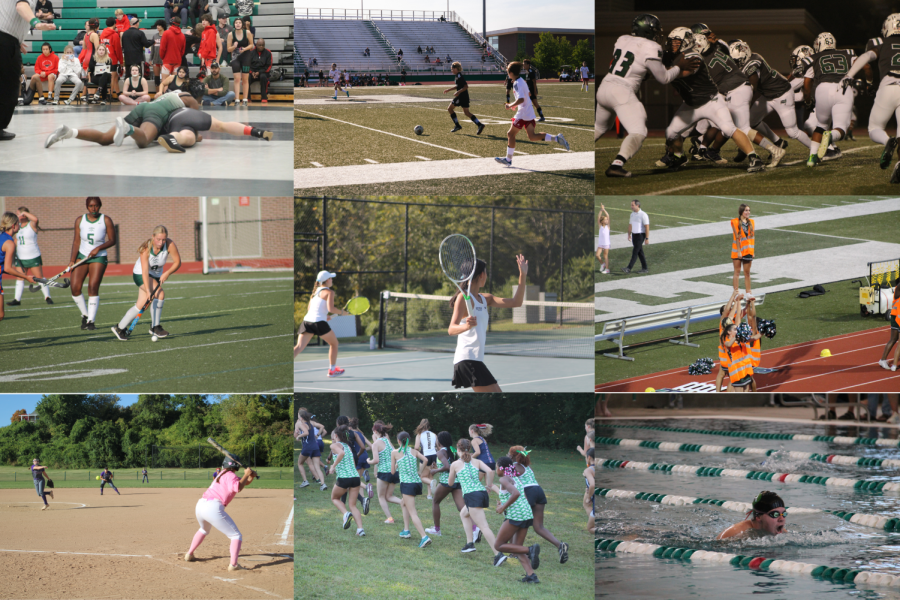Are Sports Really Worth the Risk?
According to Stanford Medicine, 3.5 million children and teens suffer from an injury due to playing sports.
February 20, 2023
According to Stanford Medicine, 3.5 million children and teens experience injuries from playing sports each year. While playing a sport is a great way to be active and social, are they really worth risking your physical health, and what are some ways to help prevent them?
Athletic trainer Alex Hubbs sees several serious injuries each school year.
“I probably see the most injuries with the football team due to the physicality of the sport,” Hubbs said. “However, the junior varsity level of most sports usually has the highest injury rates.”
While most think that football is the most dangerous sport, Hubbs believed that any sport with a projectile like “baseball, softball, etc. are always more dangerous than people think or expect, especially field hockey. That ball can get moving pretty fast and it’s not soft like a lacrosse ball like most people think. It’s closer to a cue ball than anything else, and when girls get a good hit on it, it moves pretty fast. I’ve seen plenty of facial and tooth fractures in field hockey.”
Senior Isabelle Hatfield has suffered from some pretty serious injuries doing cheer and playing lacrosse.
“I have had a fractured tibia that came with a bruised femur, a moderate concussion, fractured wrist, and a severely sprained ankle.”
Due to the course of her injuries and the severity of them, Hatfield has had to sit out of her sports several times. During those times, she started to see her mental health slip, “to go from being able to do anything to nothing at all was a switch that I was nowhere near prepared for.”
“Watching it all continue to go on motivated me to come back, but the timeline was never set,” Hatfield said. “As the timeline kept getting pushed back I felt my spark for the sport start to die down. It was hard for me because I felt as if I wasn’t as much part of the team anymore.”
In addition to Hatfield, senior Beckett Grabner has also undergone some pretty serious injuries playing soccer and tennis.
“I have broken my collarbone and pinky finger, dislocated my kneecap, broken my nose, and gotten far too many burns and cuts from the turf while goalkeeping,” Grabner said.
Being a goalkeeper has been the reason for most of Grabner’s injuries and throughout them, he stated that he learned that “all goalkeepers should wear finger-savers in their gloves at all times, and not broken ones either. I learned that the hard way.”
Since playing sports can be super dangerous and risky, each team has to take into account that risk and enforce safety measures to help prevent injuries that occur each year.
For Hatfield, cheerleading is all about trusting your teammates in order to perform stunts. Doing so they have to assure that everyone on the floor is readily prepared for each move made.
“We take learning new things slowly and take a break when we feel we need to recharge in order to be safe. We build an extremely close team dynamic that allows us to be closer and work together. Working together is the foundation needed to ensure that we all fight for each other’s safety any time we are out on the floor,” Hatfield said.
In addition, Grabner and his teammates all check up on each other.
“We make sure no one pushes themself past the brink of general safety. Off the field, the coaches and medical staff have always been great at giving us rest time when we’re injured as well as handing out necessary safety advice,” Grabner said.
While playing sports can be risky to an individual’s physical health, athletic trainers like Hubbs ensure safety for all sports and assess players on the spot if something goes wrong. Hubbs believes this is the first step to securing the safety of every player who represents the Pirates by playing a sport.
“The number one thing we do as a school to ensure athlete’s safety is employing an athletic trainer,” Hubbs said. “Athletic trainers are at every sporting event because they are healthcare professionals trained in emergency care and orthopedic evaluation, as well as prevention and rehabilitation. We are also capable of handling any emergency on the field. I also develop site specific emergency action plans (EAPs) that we practice every year. These outline in detail how to manage emergencies, delegate jobs to our admin team, and pertain important information for quick access to our fields and courts. We also have AEDs near each field, and one that is always with me. Access to AEDs is one of the most important things a school can do to ensure athlete safety.


